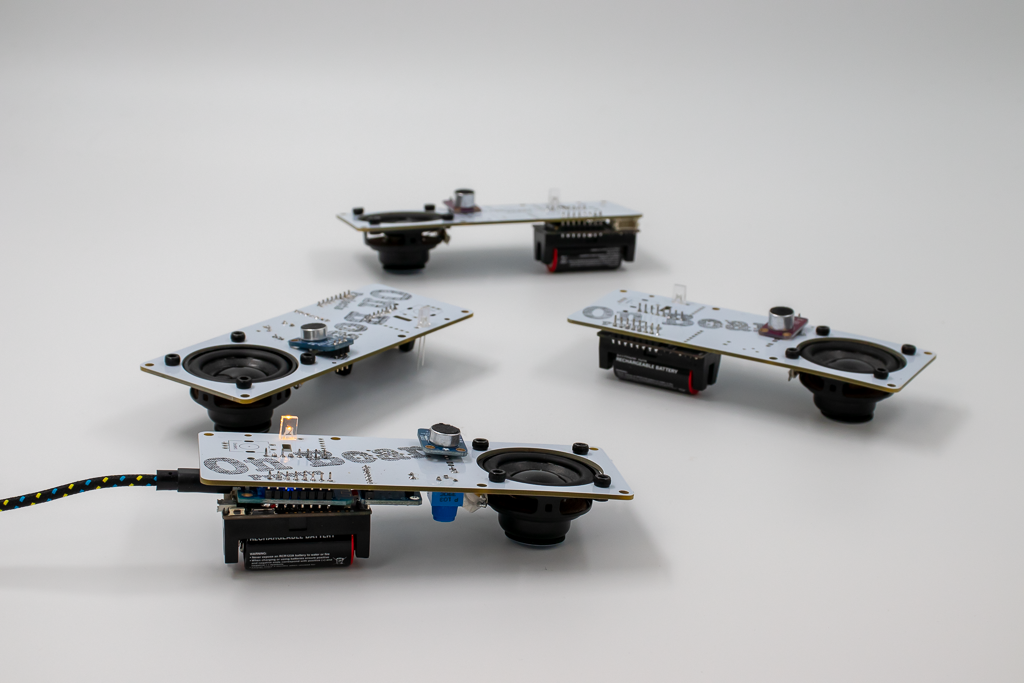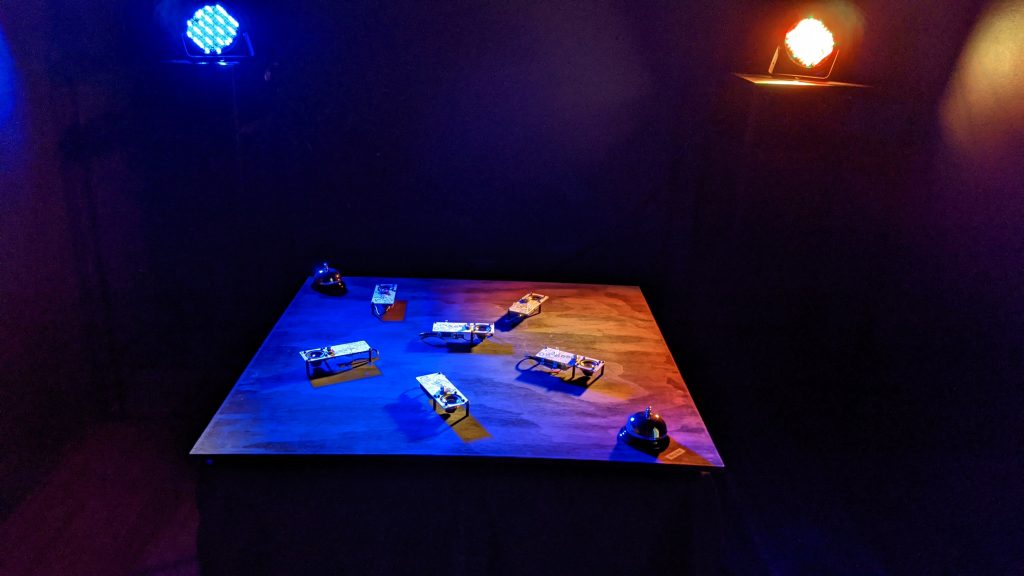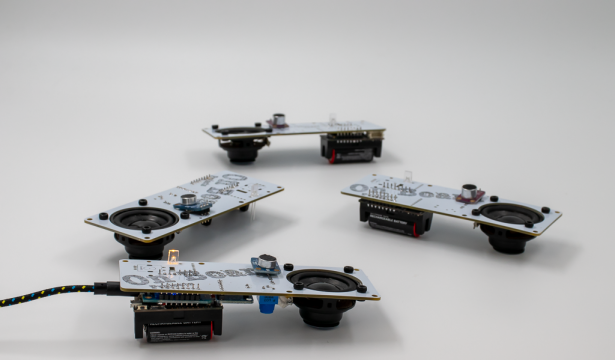This interactive audio installation features human-machine co-creation of emerging sonic structures. Participants become part of a network of bespoke sonic agents – simple computational machines that listen to, and respond with, sound – to create a swarm of sound arising from multiple individual sonic events. Designed behaviours contribute to an emergent sound design challenging us to reconsider our relations with, and effect upon, the non-human world we interact with.

The work draws attention to emergent behaviour as it exists in societies and in nature where, for example, groups of people chat, or groups of cicadas chirp together. The title resonates with an academic tradition of inquiry into our human relations with nature and our societal interactions. In particular, the term assemblage was used by Deleuze and Guattari (1987) to describe “the differential relations and relative movements” (7) that gather things together into temporary unities. They emphasise the importance of multiplicities rather than reductionist views of elements and their properties. The term was taken up by Latour (2007) for his Actor Network Theory which had a particularly sociological perspective yet draw attention to networks of humans and non-humans, including technologies, arguing “that some assemblages are built out of social stuff instead of physical, biological, or economical blocks” (43). A fully fledged Assemblage Theory was developed by DeLanda (2006) which emphasised the contingent nature of assemblies and the influence of temporal contexts. “The identity of any assemblage at any level of scale” he suggests, “is always the product of a process … and it is always precarious, since other processes … can destabilize it” (28).

The work, Audio Assemblage, provokes us to consider the circumstances that lead to complex emergent behaviour and how we can design to facilitate or mitigate such interaction. How do simple behaviours result in complex outcomes? Can we anticipate or predict emergent outcomes from such simple systems, yet alone from complex ones? What is the agency at play in such circumstances and how is that agency distributed and coupled? Is there a difference between human and non-human agency, if so, what is that and how do we design with those agency relationships in mind?
The work explores the ways in which the design process and things we produce through it, exist within contextual assemblages and networks of interaction and influence. How these assemblages perform can impact our society, our culture, and our natural environment in many ways; some we can predict, but others will be unexpected and have unintended consequences. Can we design with emergence in mind?
Audio Assemblage was exhibited as part of Designing Culture, at the Pop Gallery in Brisbane, Australia, from May 25 – June 4 2021.
References
DeLanda, M. (2006). A New Philosophy of Society: Assemblage theory and social complexity. Continuum.
Deleuze, G., & Guattari, F. (1987). A Thousand Plateaus: Capitalism and schizophrenia (B. Massumi, Trans.). University of Minnesota Press.
Latour, B. (2007). Reassembling the social: An introduction to actor-network-theory. Oxford University Press.

